1
HOME > Grooming >
HOW TO TRIM A BEARD YOURSELF THE RIGHT WAY
Written by Menswear Style in Grooming on the 16th October 2019
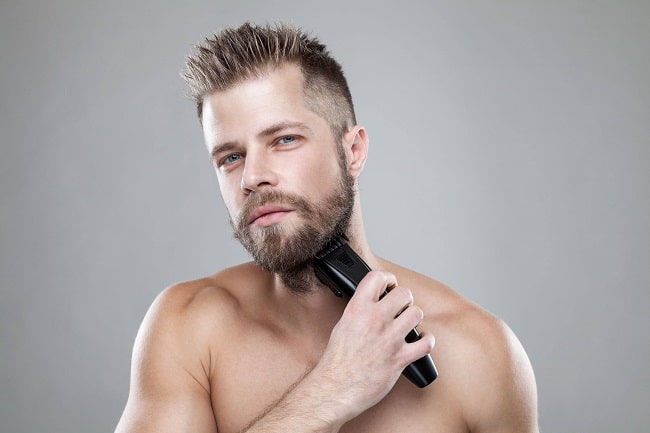
Grooming techniques, both the how and the why, once constituted a large part of a long list of directives for being a proper gentleman. Such lists also included basically carrying around a whole set of sausage links and bread so you could eat breakfast wherever you might wake up in the countryside, but this article isn't about that. Taking care of a beard requires a lot more care and concentration than taking care of other hair. For one thing, mistakes are far more visible. Knowing how to trim a beard keeps you looking great and keeps a beard healthy.
Throughout history, the evolution of beard care has marched in time to the evolution of healthcare. They aren't directly related (a good beard won't fight off disease) but the concepts of health and follicle luster remain linked. Follow through this guide to keep your beard in top shape by any definition.
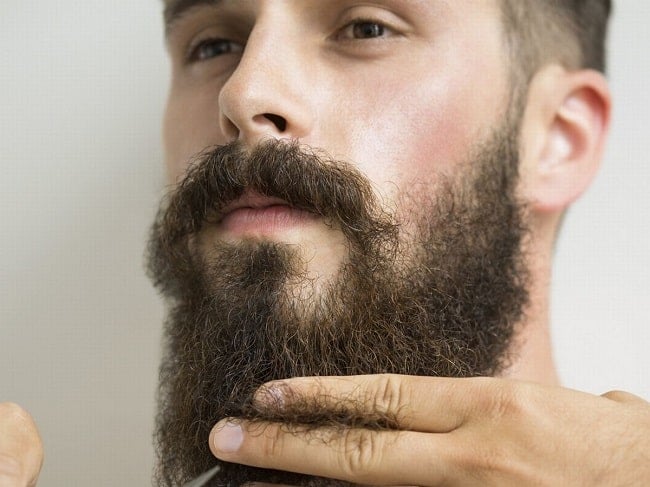
Before You Start
Preparation is the largest part of valour when it comes to facial hair. You can't get started on beard trimming until you master beard grooming. Start by knowing how to get your beard soft and workable, the better for styling and limiting wear on your equipment. From there, you need to understand the unique qualities and texture of your hair to maximise performance.
Condition: This won't be the last time you see this step; it's that important. Unlike the hair on the top of your head, beards tend to face a lot more weathering. Part of this is the surface area in the windbreak you call a face. The other part is that people tend to, for whatever reason, spend half the day touching their faces. This constant assault from the elements and your own natural oils gets a lot of grime in facial hair. At the same time, it strips your hair of vital oils, leaving it dry and unprotected. Start every day with a beard wash/face wash with a hydrating cleanser. This restores much-needed moisture and cleans out overnight grime. After a wash, apply a beard conditioner or oil to soften the follicles. This keeps the hair from cracking and splitting through the day, which prevents your beard from looking frizzy and disorganised. Best of all, a soft, conditioned beard doesn't scratch and itch, leaving you to only scratch at your chin in contemplation, not consternation.
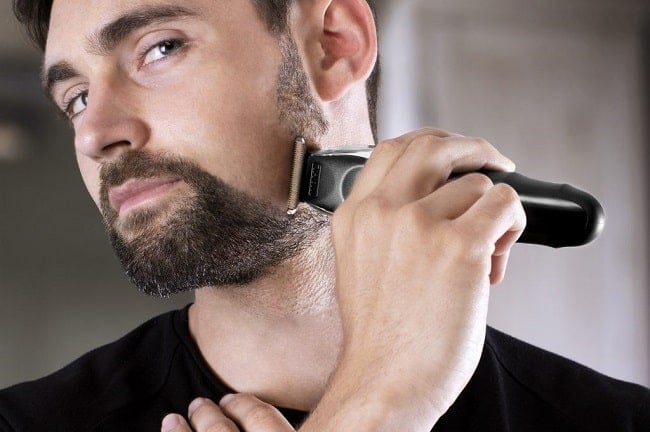
Knowledge: Next, you want to know your beard hair type before you get going on gathering equipment. Coarse hair, thick hair, curly hair? Short, straight, a bit thin? All of these characteristics require a different finesse to control. When you know your hair type, you can select appropriate products to keep your curls curly or your thin hair looking voluminous. In addition to your hair type, you also want to know where your beard does and doesn't grow. this is a painful thing to consider, but it's better to trim your beard for a style you can produce, rather than one you hope for. Know where your chin and neck meet and decide where you want them to appear to meet. It also helps to know how your typical shirts sit, especially if you wear a lot of collared shirts.
Equipment
Contrary to a particular kind of opinion, having a beard doesn't mean not owning a razor. Typically, it means owning a more deluxe set of attachments for the right razor. Check out a set of reviews for Mister Shaver to see the depth of products available. In addition to an electric trimming razor, you also want the following: Brush/comb, Detailing scissors, Beard Soap, Beard Conditioner/oil, Typical Razor.
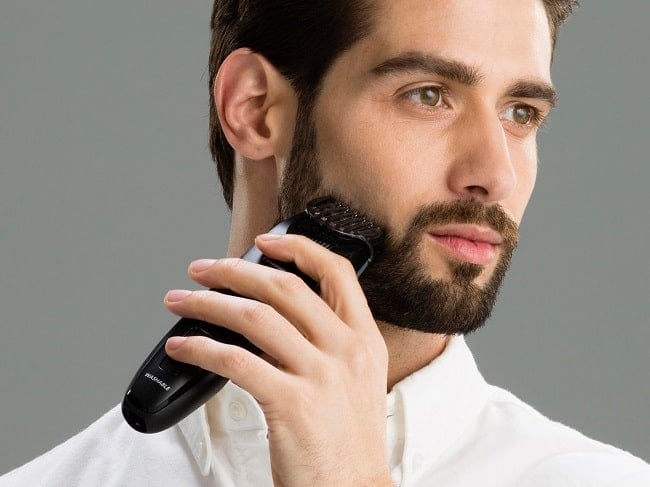
How to Trim a Beard (For Now)
Now you begin the task in earnest. Start by selecting a shape and style. Picture this in distinct components. Your beard isn't a whole unit, even if it is connected ear to ear. Proceed to brush out the hair in a single direction. You want everything to point one way to get a proper judge of its length and thickness. For curly beards, this can seem a bit of a lost cause, but it helps. The scissors come first. Go through your beard taking out any exceptionally long hairs or ones that skew in the wrong direction. The neat, sharp cut of scissors helps remove split and unraveling hairs before they can tear further. Move on to the sideburns with the trimmer. Always start with your longest selected comb size and move down by an eighth as you go. Run a long pass through, starting at your chin and moving up.
If you've clearly defined your sideburns from the hair around your ear, go for a taper to show the distinction. If you are uncertain of this boundary, leaving it longer at the top hides mistakes better. Next, mark out your neckline. You want to hit the area with the trimmer to give a fuzzy line, not a sharp cut. This leaves your hair easier to manage and avoids looking unnatural (unless you are going for sharp edges). Clean up the area below your chosen neckline with a typical razor. Finally, attack the area around your lips and nose. You want to make a clearly defined line above your lip to keep hair from going in your mouth. This is the only area of your beard you want to wet as you work, to see how far things hang when heavier. For the pencil thin look, you want to make the area above the moustache and below the nose a neat line. For bushier moustaches, trim nose hair.
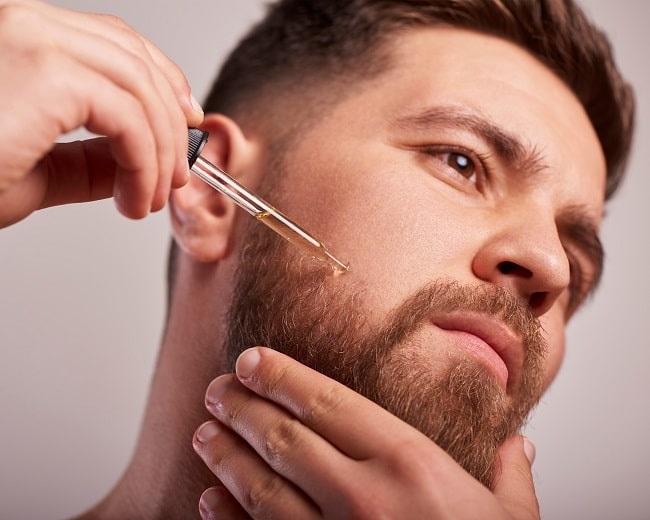
How to Trim a Beard (For Later)
The above works great for maintaining a beard shape. However, for those of you looking to grow out a beard, you don't want to put as many hard edges or tight constraints on the procedure. Trimming a beard to encourage growth is different than cutting for style in two ways. First, you don't want to hit the edges too hard as your beard shape comes into its own. This is part of the knowledge step of beard living. If you have a good idea of your beard's behaviour from previous beards, you can force whatever shape. Second, you want to refrain from cutting too close to the skin with any trimmer combs. This can push the growing hair inward, creating painful ingrown hairs. You want to keep the hair from being too thick so that the follicles stay moist to promote growth. You want a growing-in beard to look serviceable even if it's not where it will eventually be. You can't always make it look perfect in-transition, but you can make it look neat and intentional.

Cleanup (Always)
After any trimming, you need to remove excess clipped hair. This produces a more finished look and avoids problems of leftover beard hairs falling onto your shirt or into your keyboard. Stretch the skin a bit below your chosen neckline and give that extra attention with aftershave or moisturiser. The area below the jaw tends to bunch up, which makes it easy to trap hair clippings which will cut and leave redness. Give yourself a once over in the mirror and check for anything that looks askew. It's easy to overthink and second-guess in this step. Only go back to trimming if you see lone hairs off in their own No-Man's land. Trying to reshape after you've finished easily leads to starting over on a whole new beard.
Before You Call It
Rinse your beard and pat dry to finish, removing any excess trimmings. Brush or comb through the hair to get it moving in the direction you prefer. Especially at the chin, it's important to pick between a straight-down look or a a gentle curve into a point. With everything neat, clean, and dry, you are ready to do a post-trim ritual. Don't forget to properly comb your beard. Investing in a good heated beard brush can completely transform the look of your beard and make it more elegant.
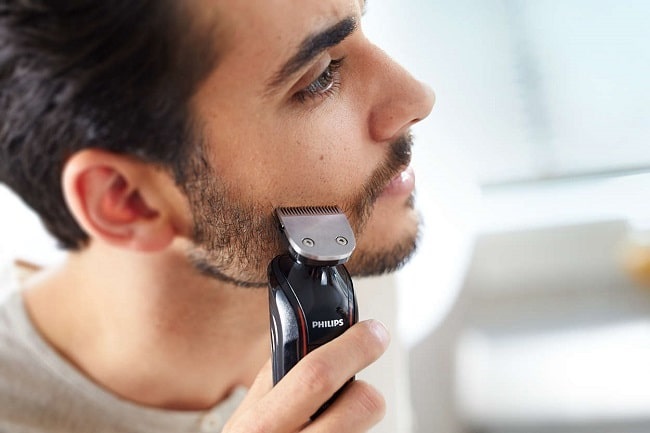
Condition: As stated near the top, conditioning makes a comeback. You just spent a fair amount of time touching your beard with fingers, devices, etc. It's now covered in the wrong oils and a bit clogged. You don't want to rewash everything - that leads to dryness. You do want to blend out the oil pH with a beard balm or a shave oil. These products redistribute oil and leave a pleasant odour to enjoy throughout the day. While this all sounds like a lot of repeats, it's simply being thorough. The whole process of trimming and maintaining after selecting and training a shape doesn't take more than 15 minutes. And you know you're worth that kind of time.
Keep Styling
There are hundreds of styles you can employ to sport your proud beard heritage. Learning how to trim a beard for health and longevity still needs to be undertaken as a rigid rule. We may not have the days of detailed breakfast preparation instructions that are somehow coiled in with manhood, but we do have a duty to ourselves to resist scraggle.
Trending
2
3
4
5
6
7
8
9
10









